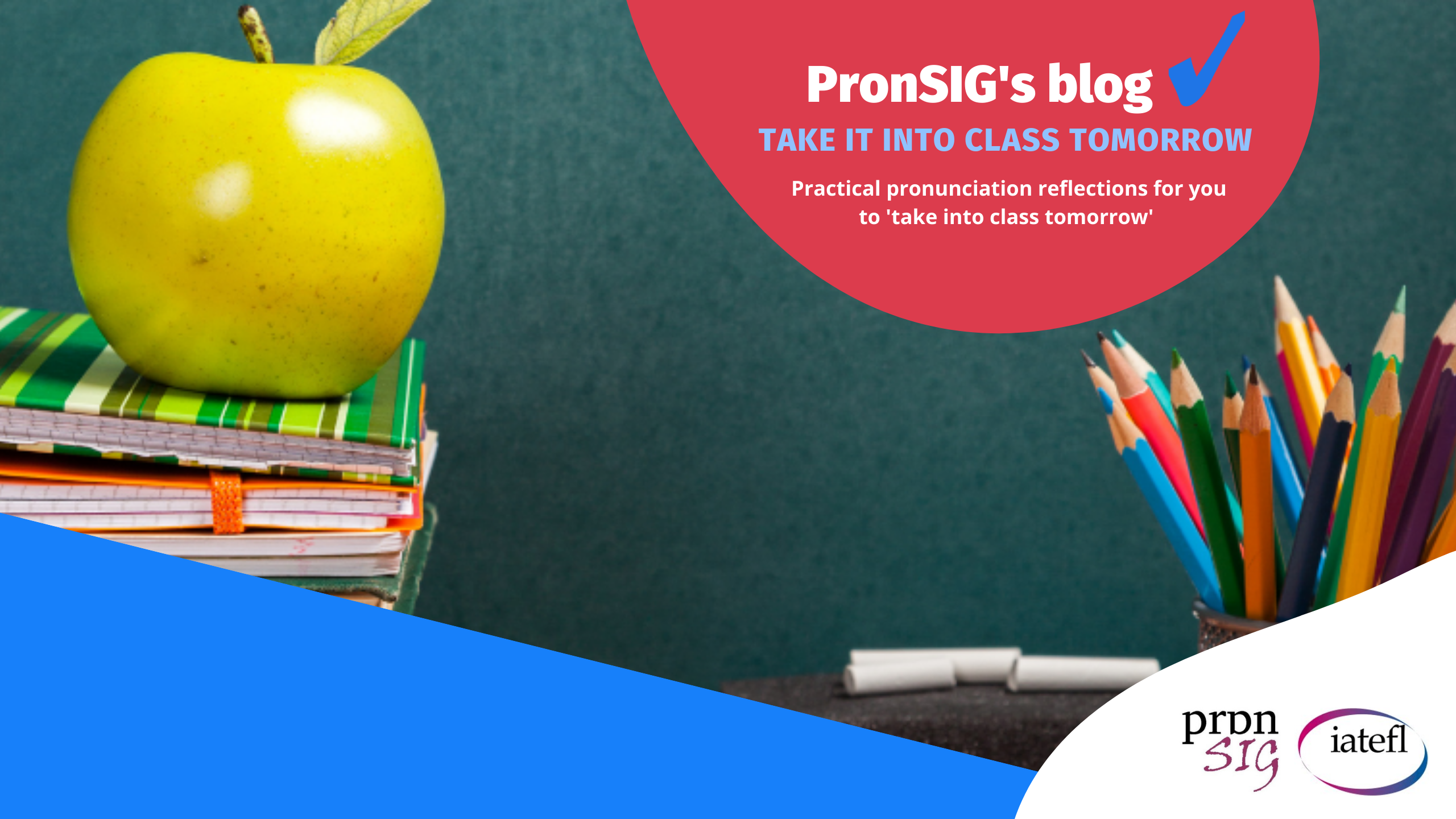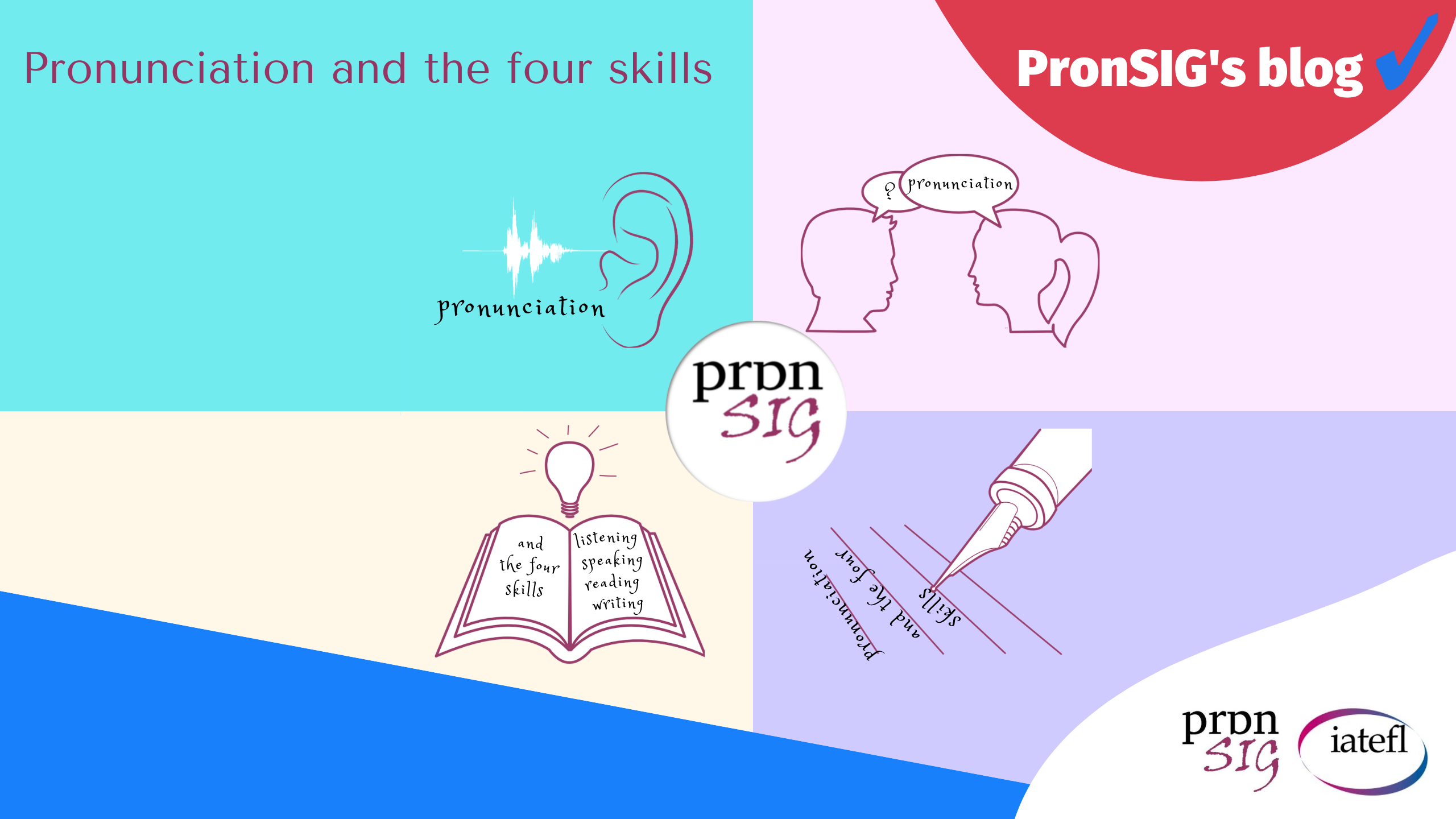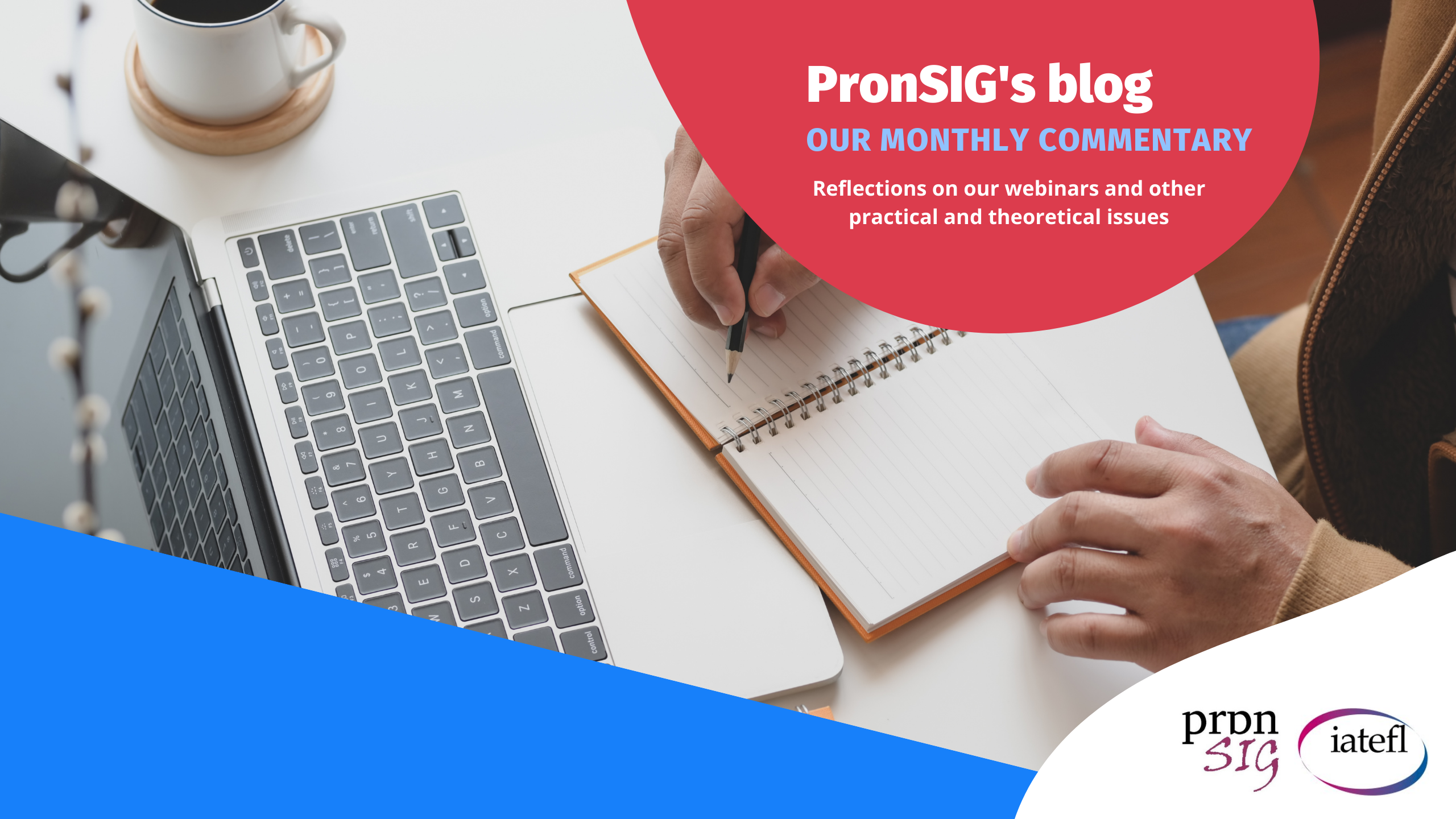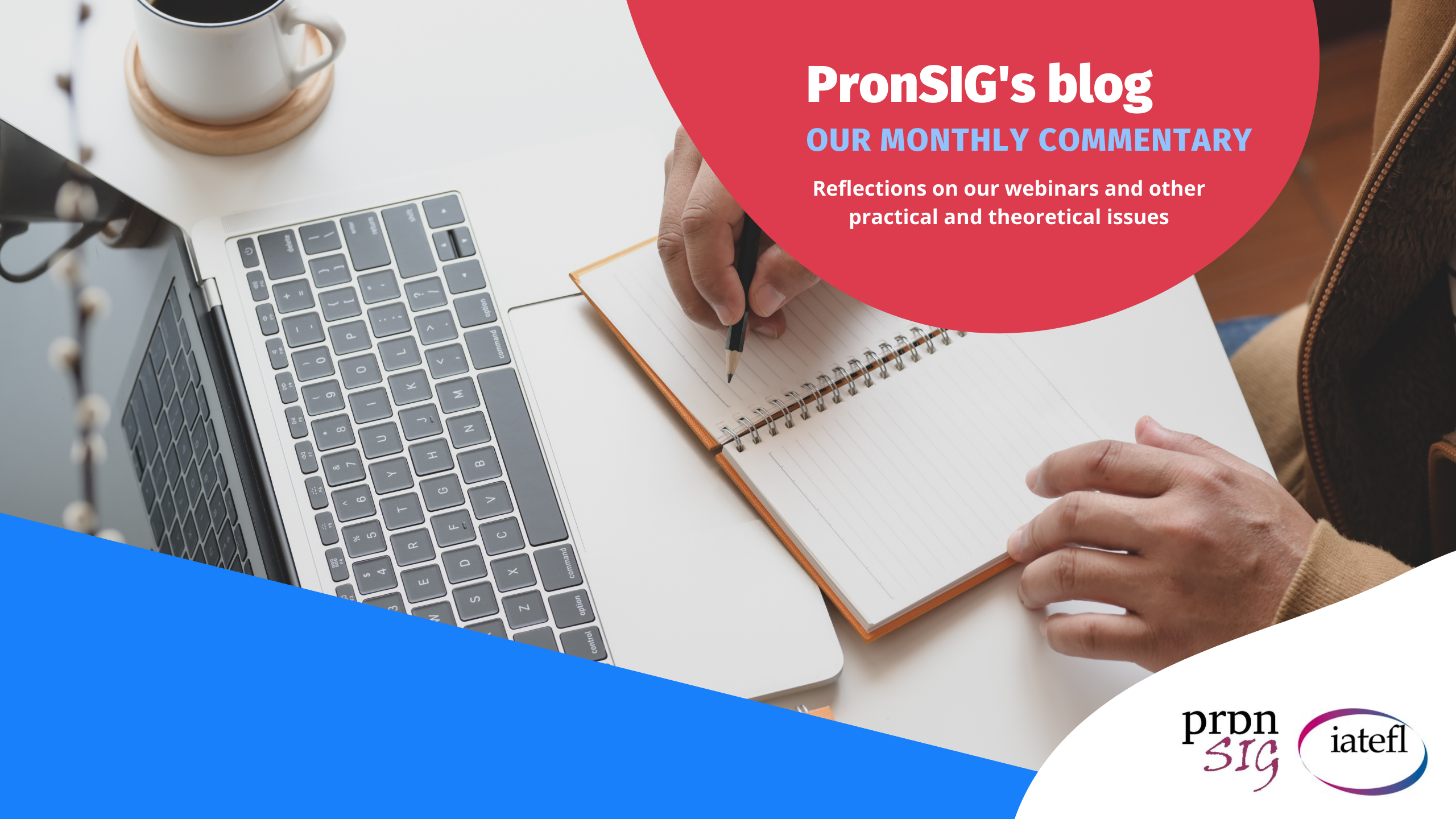by Ana Paula Biazon Rocha ‘Of all the aspects of language – vocabulary, grammar, pronunciation, spelling, the four skills and so on – pronunciation is probably the one that needs …
Takeaways from our PCE event: Part 2 – Speaking and Writing
by Ivana Duckinoska-Mihajlovska PronSIG’s Pre-Conference Event (16 May), Pronunciation and the four skills, offered us a myriad of ideas and tips on how to integrate pronunciation into our lessons. At …
Takeaways from our PCE event: Part 1 – Reading and Listening
by Ivana Duckinoska-Mihajlovska This year’s PronSIG pre-conference event (16 May) catered for all tastes. Titled Pronunciation and the four skills, our first hybrid event ensured that everyone wrapped up the …
Getting to know our PCE speakers
By Ana Paula Biazon Rocha and Victor Medina Soares As the IATEFL 2022 conference in Belfast approaches (17 May-20 May), PronSIG gets ready for two amazing events: our Pre-Conference Event …
Reflecting on your own teaching of pronunciation through PronSIG’s latest webinars
By Ana Paula Biazon Rocha In February and March 2022, PronSIG’s webinars with Victor Medina, Understanding intelligibility in Pronunciation Instruction, and Anastazija Kirkova-Naskova, Research-informed pronunciation instruction: Best practice recommendations, respectively, …
Sound variation and change: key takeaways of PronSIG’s webinar
by Ana Paula Biazon Rocha The first PronSIG webinar of 2022 with Thais Cristofaro Silva, ‘How does your mother tongue impact L2 learning?’, focused on answering two essential questions: 1) …
Top 6 tips on teaching intonation from Lucy Pickering’s sessions for IATEFL PronSIG
by Ana Paula Biazon Rocha On 20 November 2021, IATEFL PronSIG invited Lucy Pickering to run two sessions: Ask the Expert, where participants had the chance to ask her questions …
Can anyone think of the children?
In our monthly commentary, our bloggers call for more practical research and experimentation in the Early Years pronunciation classroom.
Top 6 tips for teaching pronunciation from PronSIG’s Online Conference
by Ana Paula Biazon Rocha On 02 October 2021, PronSIG’s online conference, Mind, Brain and Pronunciation: How thoughts, emotions, and experiences affect L2 English pronunciation, offered participants a myriad of …
Pronunciation and Orthography: Strange Bedfellows?
Can we rely on spelling to help our learners better grasp pronunciation features of English? Explore some ideas on this subject in this post!
Reading aloud as a potential pronunciation tool for teaching thought groups
by Ivana Duckinoska-Mihajlovska Recently, we asked our social media followers if they think that reading aloud (RA) is a good pronunciation practice for students (Ss). The feedback was overwhelming with …
Understanding some essential terms and definitions in L2 pronunciation teaching and learning
by Ana Paula Biazon Rocha L2 pronunciation teaching and learning involves the consideration of segmental and suprasegmental features and how they affect the intelligibility, comprehensibility and accentedness of one’s speech, …
The appeal of using podcasts in pronunciation teaching
In this post, we highlight some of the key messages we took away from Jonás Fouz-González’s workshop for PronSIG’s Pre-Conference Event, held on 12 June 2021, where he gave us very interesting ideas for using podcasts in pronunciation teaching.
Top 6 tips for teaching pronunciation using technology from PronSIG’s PCE (12 June 2021)
by Ana Paula Biazon Rocha June was a really busy month for PronSIG with our Pre-Conference Event (PCE) day, PronSIG Showcase day and the IATEFL conference event. There were lots …
How to transform classroom activities into pronunciation training
by Ivana Duckinoska More often than not, we hear about pronunciation being marginalized in the EFL classroom and we tend to blame the time-constraints and packed curriculum for that. I …
Training a new generation of Pronthusiasts
Notes on Viktor Carrasquero’s webinar about Ideas for fostering phonological awareness in the Early Years class by Ana Paula Biazon Rocha and Viktor Carrasquero In last month’s PronSIG’s webinar, Viktor …
When to teach pronunciation?
by Ana Paula Biazon Rocha If researchers and experts in English pronunciation and pronunciation pedagogy were asked the question posed in the title, I guess most of them, if not …
Dimensions of Pronunciation Work
PronSIG highlights some of the key ideas Mark Hancock shared on his Q&A session.
How should we correct pronunciation mistakes?
by Ana Paula Biazon Rocha When teaching pronunciation, one of the many questions that may arise is how and when to correct our learners’ pronunciation mistakes. We certainly don’t want …
A ‘pronunciation lab’ to go, please!
In the pronunciation classroom, technology is definitely our friend. In our new blog post, find some of our reflections on Stella Palavecino’s recent “/læb/ bites” webinar, and about the art and science of creating purposeful, technology-mediated learning tasks.
Listen, but let’s work on how we repeat it!
by Ana Paula Biazon Rocha The most conventional approach to pronunciation teaching is listen and repeat, where teachers provide learners with a model, such as their own, an audio track, …
Mindfulness as a springboard for pronunciation work
Can we foster mindfulness as we teach pronunciation?
Read this post to find out more.
Using your hands to teach pronunciation?!
Why not use our hands to help students ‘visualise’ the articulation of sounds and some pronunciation features?
Read this post to find out more.







